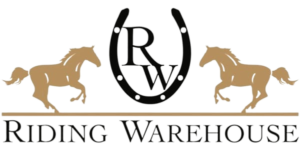By Connie Caudill and Dinah Rojek
Every ride manager depends on volunteers in order to have a successful ride. Without volunteers we have no rides but with every volunteer there are risks that come along with their jobs. Dinah Rojek has come up with some very good points regarding volunteer safety that we felt should be shared with all riders, volunteers and ride managers.
This year we have already seen some serious accidents that ride volunteers have been involved with and we felt it would be beneficial for all ride managers to copy a list of the safety points in this article to hand out to all their ride volunteers. Volunteer duties are written in the ride manager’s handbook — be sure to read and become familiar with them.
Rider responsibility – Keep your horse in control at all times. You are responsible for your horse. Train him on good ground manners before you go to a ride. Riders need to be aware of their horses at all times and what they are doing. Don’t get so involved in a conversation that you are not paying attention to your horse that may be biting the horse beside him or trying to kick the horse behind him and placing all that are around in danger.
Volunteer responsibility (and equine awareness) – Volunteering for activities that require close contact with horses requires constant vigilance. If you are unfamiliar with horses it would be wise to work with someone who is an experienced and safe horse handler before volunteering for close contact jobs in the pulse box or as a veterinarian’s scribe.
- Large animals can hurt you inadvertently and without malice.
- When approaching a horse, do so from the shoulder while letting the horse know you are approaching.
- Observe the horse’s head because a lot of information can be obtained by the position of the ears. A horse will direct one or both ears toward a sound whereas ears held out to the side may indicate a sleeping, sick or sedated horse. Ears pinned back indicate a threat or anger and may be followed by the threat of a bite or kick.
- When moving around a horse, either stay very close to it or walk completely out of range of its feet, and remember to be out of range of other horses near it.
- Pulse and respiration (P&R) people should station themselves at appropriate distances from one another to minimize crowding in the pulse box. This will lessen the chances of aggressive behavior between horses.
- Scribes for veterinarians should stay aware of their proximity to the horse being vetted, as well as the ones being vetted by other veterinarians, and avoid being caught between two horses.
- Each volunteer should be covered by their own personal health insurance
- Pay attention — in all directions!
The difference between ordinary and extraordinary is just that little extra. ~Unknown










